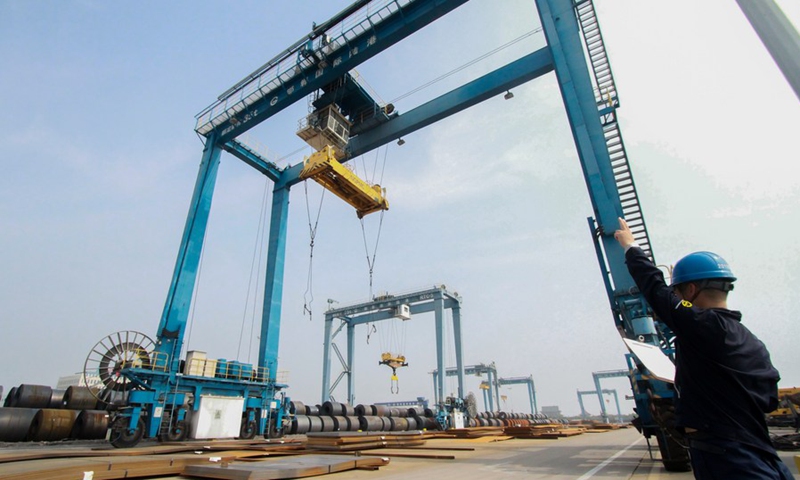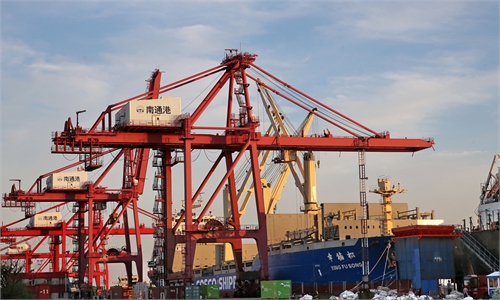
A worker monitors the transfer of steel plates at Handan international land port in north China's Hebei Province, July 16, 2020. (Xinhua/Li Hao)
China's imports of raw materials and staple commodities, including steel, crude oil and soybeans, saw a significant rise in the first quarter of this year, driven by its rapid economic recovery, according to China's customs authorities on Tuesday.
In the first quarter of 2021, China's imports of iron ore went up by 8 percent, to reach 283 million tons. Import of crude oil increased 9.5 percent to hit 139 million tons, and soybeans increased by 19 percent to reach 21.278 million tons.
Imports of major crops spiked in the first quarter. Corn imports rose by 437 percent to 6.727 million tons, and wheat was up by 131.2 percent to 2.925 million tons.
Li Kuiwen, spokesperson of the General Administration of Customs (GAC) said that such rises can be attributed to the fast increase of global commodity prices that were elevated by extraordinarily loose monetary and fiscal policies adopted by major economies such as the US.
As of March, the import price of iron ore has kept increasing for 7 months, and the price of copper ore has been increasing for 11 months. In March, the price of crude oil also began to rise after 12 months of decreases.
While the spot prices are seeing double-digit growth, key commodities' future prices have jumped significantly this year, up over 50 percent compared to the same period last year.
The rising prices of commodities, which are often raw materials used in manufacturing, have been putting pressure on China's manufacturers, and experts say the prices were hyped up by the US' loose monetary and fiscal stimulus plans, as well as rising global orders and speculations.
As part of efforts to revive the pandemic-plagued US economy, the US Federal Reserve has cut interest rates to zero and implemented unlimited quantitative easing. Following a previous $1.9 trillion relief package, the US has unleashed a total of fiscal stimulus spending of $5.2 trillion since the coronavirus crisis began, equivalent to about 25 percent of the US GDP in 2020.
The price spike of major materials are unlikely to stop until the middle of this year, Hong Shibin, deputy executive director of the marketing committee of the China Household Electrical Appliances Association, told the Global Times.

